Floating shelves are the new thing to put your aesthetic decors on. But are all the floating shelves the same? No, they are not. Depending on their build, it’s made for different things. And depending on how deep the shelf goes, you can put different sizes of stuff. So, How Deep Should Floating Shelves Be?
Well, here we have a full guide on all the different materials and dimensions of the floating shelves. So, let’s begin with our guide!
Why Do You Need a Floating Shelf In the Right Depth?
Depending on your use of the floating shelf, the depth and thickness can differ. The standardized floating shelf depth guide suggests of a floating shelf is 10 to 12 inches. And this depth usually fits in most cases for a floating shelf. The depth of the floating shelf means the length of the floating shelf from the wall to the edge of the board.
The main concern that comes with the depth of the floating shelf is drooping in the middle. And with the ideal floating shelf depth of 10 to 12 inches in depth, you don’t need to worry about drooping in the middle. Also, along with the depth, the length of the shelf matters as well. Both of the measurements need to adjust themselves for a balanced weight capacity.
Check the table below where we have given different depth measurements depending on what you should be putting on the shelf.
| Items | Home Decors | Washroom Amenities | Mugs and Glasses | Books | Dishware | Cookware |
| Depth Suggestion | 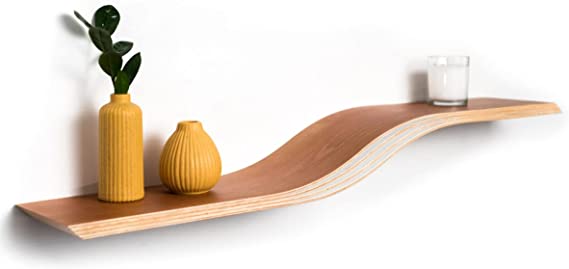 6 to 8 Inches | 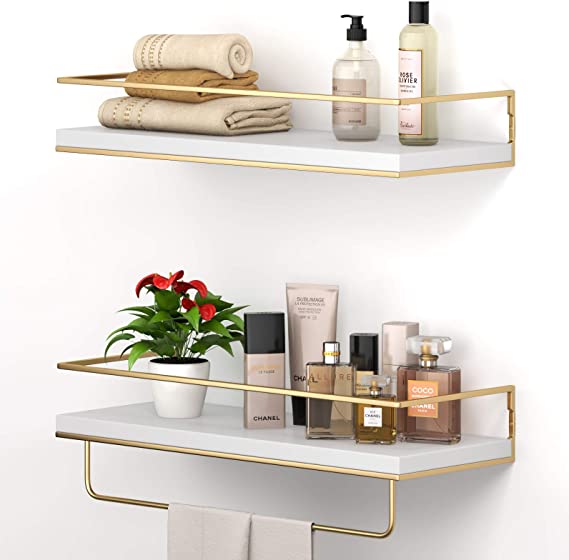 8 Inches | 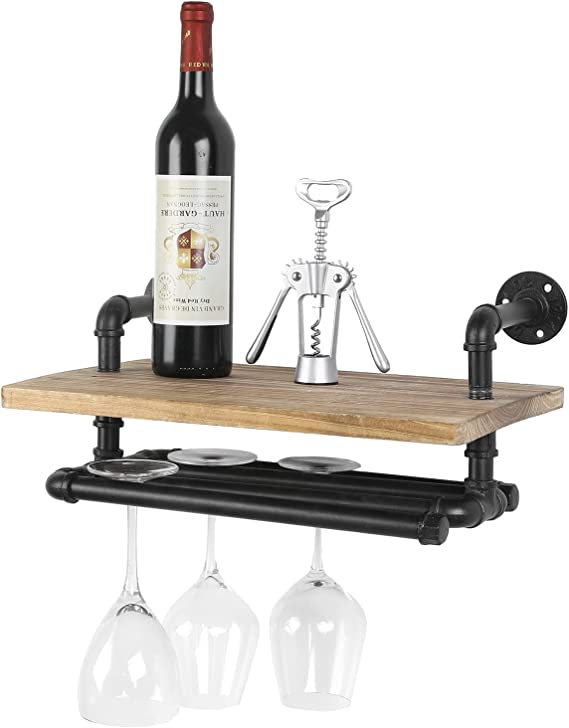 8 to 9 Inches | 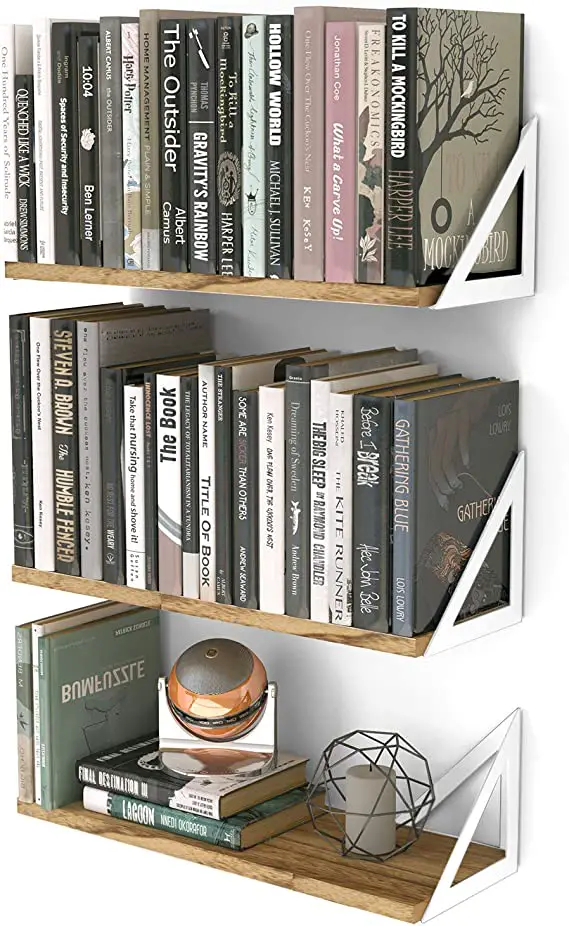 10 to 11 Inches | 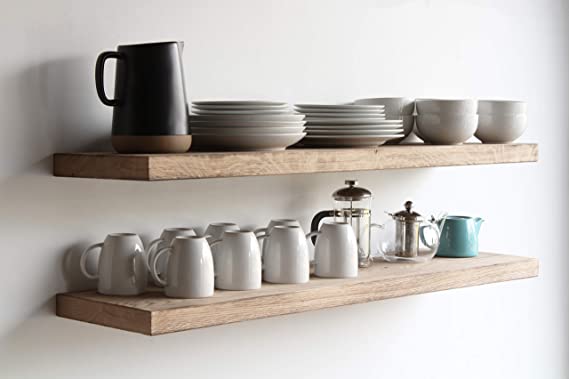 11 to 12 inches | 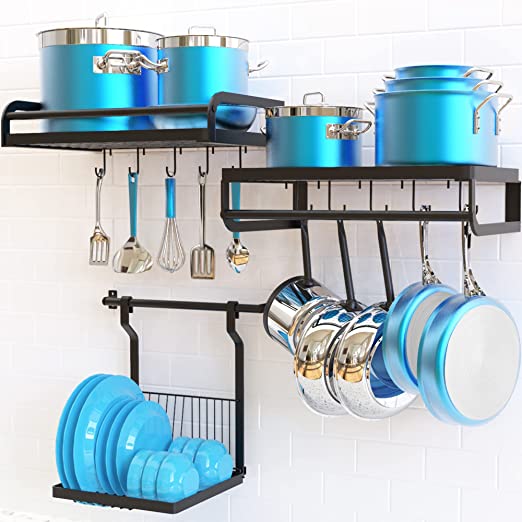 12 inches |
This is a basic depth recommendation for floating shelves. The suggestion is based on the basis of what you can put on the floating shelf. But this can all differ on how much the items weigh. So make sure your floating shelf is capable to withstand the weight you are putting it up to.
Choosing the right shelf depth is concerning because of the durability or the weight capacity, another thing you should look for is the thickness of the board. The thickness of the board can increase or decrease the weight it can take on itself. So, check the section below to learn about the thickness of the board.
What Should be the Thickness of Your Floating Shelf?
There are a few things that depend on the thickness of the floating shelf. The total length, aesthetic, and what you are putting on the shelf. The thickness of the floating shelf is as important as determining floating shelf depth.
Depending on the total length of the board, the thickness can matter. Cause if the length of the self is too long, then the shelf can be drooping in the middle. And a drooping shelf can be on the verge of falling and moreover, it cannot be aesthetically pleasing. So, the longer it is, the thicker it needs to be. If the shelf is quite long, 2 to 4 inches should be enough thickness.
The thickness of the shelf can be around your aesthetic type. But a thinner shelf is more modern looking. And a thicker shelf is more rugged and rough look. So depending on your style, go for the different thicknesses of the shelf.
Does Thin Floating Shelf Have Lower Weight Capacity?
A thin floating shelf does have a lower weight capacity depending on what material they are made up with. Such as a thin floating shelf made of steel will withstand more weight than a thin shelf made with wood. The main difference between shallow vs. deep floating shelves is the weight capacity it will have.
To learn about different materials for floating shelves, check the section below.
What are the Floating Shelves Made of?
A floating shelf can be made up of different types of material. The most common materials to make a floating shelf are concrete, wood, and metal. But there can be different variants of them as well. We have given a list and details on each of them right here.
Concrete
The floating shelf made of concrete has a distinct look. Usually, a concrete floating shelf gives a more rugged and rough outlook to your interior. But using concrete can really increase the weight capacity of the shelf. So if you are going to leave some heavy things on the shelf, using concrete is the way to go.
If you’re thinking about deep floating shelves for storage, using concrete is a good option.
Wood
The most common material to make floating shelves is wood. There are different kinds and types of wood you can use to make a floating shelf. Pine, plywood, maple, walnut, birch, and cherry wood are most commonly used in households. And each type of them comes with their own pros and cons. We have given the details on each type of wood right here. So why don’t you carry along!
Pine
If you are working on your own, this is a crowd favorite because it’s really easy to work with. On top of that the wood grain of pine is really beautiful. Also, the wood is really lightweight and affordable.
Plywood
If you are planning to paint the shelves, this is the one to go with. Cause the ends of the plywood are not that pretty. But this is the most affordable wood for a floating shelf. However, this does not have any grain patterns. So if you stain or paint the surfaces, it will be more good looking.
Maple
If you like a stained look, this is the wood for you. Maple does not have a lot of grain patterns, so stains go perfectly with them. Also, among all the other hardwoods, maple is quite cheaper.
Walnut
This is the only dark wood among the other woods we are talking about here. But this will cost you a lot. Walnuts are hard to come by and the prices of them are not cheap. So if you are spending on the shelf, why not go big and get some walnut wood for the project.
Birch
This wood is really lightweight. But this does not mean it’s not durable enough. But if you are thinking about staining them, this is not the best option to go for. Birch looks really good if you are thinking about narrow floating shelves for small spaces.
Cherry
This wood has a browning red color. If you are going for this color, this wood would be a good option. Cherry wood also has a smooth texture and fine grain. This wood is also really good to work with.
Metal
If you are not using wood or concrete, metal is the other material you can go with. Like the other two materials, the thickness of metal does not relate to the weight capacity of a regular household. Because metal in nature is more durable and strong than wood and concrete. So you can simply cut your required size and attached it to the wall.
These are the most commonly used materials for floating shelves. There are other materials like plastic, which can be used to make your floating shelves. And the standard depth for floating shelves matters for all types of materials.
Proper Dimensions of Floating Shelves
Too much length with lower thickness and depth can make the shelf weaker. So make sure the thickness is between 2 to 4 inches. And the depth should be 10 to 12 inches for basic items in your household. These are standard floating shelf dimensions.
FAQs on How Deep Should Floating Shelves Be
How deep is too deep for a floating shelf?
Usually, most floating shelves range around 12 to 15 inches in maximum depth. Anything more than that can cause drooping in the middle. Also, more depth than that can cause cracks. But if you must have deeper shelves, make sure the brackets or attaching part below is strong enough.
What is the standard size for a floating shelf?
The standard depth for floating shelves is 10 to 12 inches. The thickness should range between 2 to 4 inches. And the length of the shelf should not be more than 24 inches. If you have shelves that are longer than 24 inches make sure it has proper support to hang them.
How do you measure floating shelves?
You need to use a pencil, an inch measuring tape, and a level to measure a floating shelf. Place the measuring tape where you are going to have the shelf, level the area, and mark it with a pencil. If you are going to have multiple shelves, make sure to leave some space around them. Make sure you keep the width of the shelf in your head and measure accordingly.
What is the maximum length for a floating shelf?
Any floating shelf over 12 inches will droop down with heavy things on them. So make sure it has proper support below. With the proper support below, you can have a longer shelf.
What is the standard height between shelves?
If you are stacking shelves, leave 8 to 12 shelves in between so you can have stuff in between. Leaving 8 to 12 inches between shelves is the most common measurement but you can have different spaces in between the shelves depending on what you are going to have on the shelves.
How high should floating shelves be from the floor?
Floating shelves should be 4 to 5 feet above the floor. But the height also depends on how higher your hands can reach. But make sure your shelves are high enough so that children cannot reach and hang on them.
Verdict
So, that is everything you need to know about, How Deep Should Floating Shelves Be?
Floating shelves are incredibly cool and add aesthetic appeal to your space. However, take care to avoid injury while hanging or taking the shelf down.
Have a good time taking down your floating shelves!
Click here to know How to Hang Over the Door Shoe Organizer Without Hooks
Share the joy
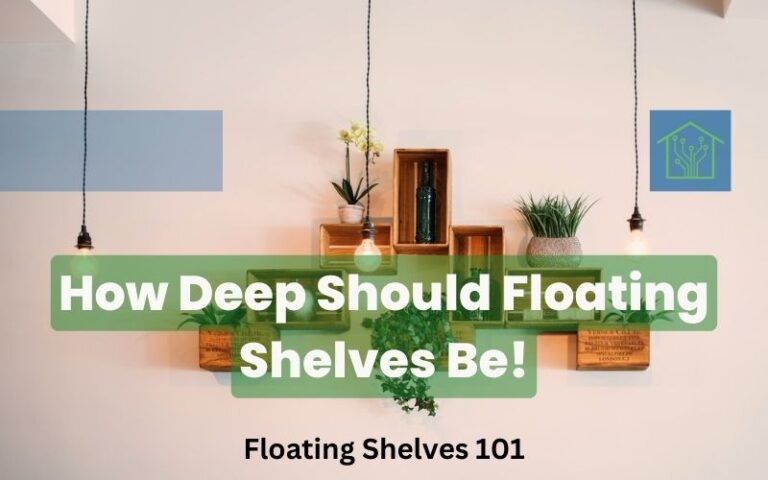









Written By Rachel McLean
Rachel has a talent for selecting and displaying the latest trends and items in the market, and her writing about home decor and accessories is intelligent and fascinating. Her writing is usually accompanied by wonderful imagery, and she has an uncanny ability to help her readers imagine how various pieces might be combined to create a beautiful living area. She has a profound understanding of color theory and how to use accessories to improve the overall beauty of a room. Rachel's blog is a fantastic resource for anyone seeking to enhance their home's decor, as her writing is both instructive and motivating.
2 thoughts on “How Deep Should Floating Shelves Be | Floating Shelves 101”